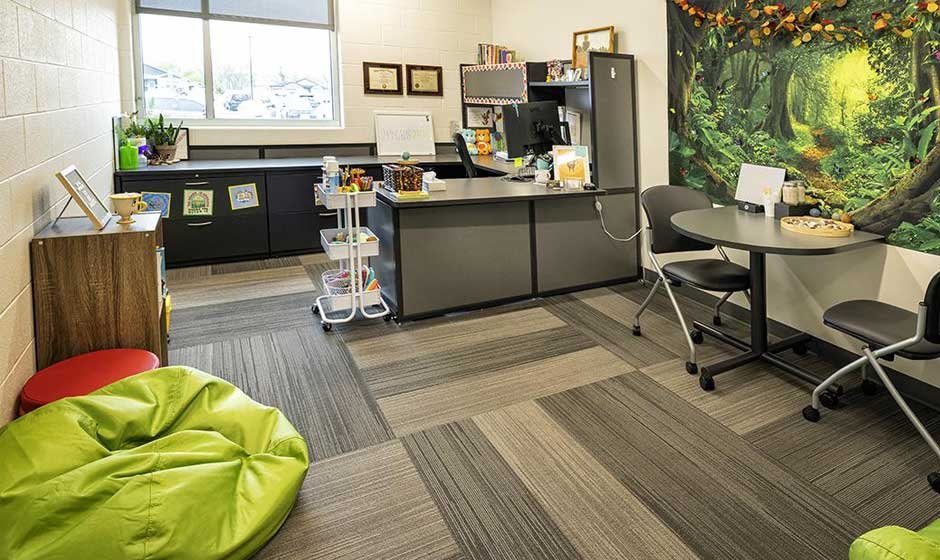Introduction
Schools are more than just centers for learning; they’re environments where children grow, socialize, and develop lifelong habits. Maintaining hygiene in these spaces is paramount to safeguarding the health of students, teachers, and staff. A hygienic school not only reduces the spread of illnesses but also creates a more welcoming and productive atmosphere for everyone. This article outlines essential practices that schools can adopt to ensure a clean, healthy learning environment.
Daily Cleaning Routines: A Foundation for Hygiene
A robust cleaning routine is the backbone of any hygienic environment. Classrooms, hallways, libraries, and gymnasiums are used by hundreds of students daily, making them hotspots for germs.
Cleaning staff should follow a detailed checklist, ensuring that high-touch surfaces like doorknobs, light switches, desks, and computer keyboards are disinfected multiple times a day. Floors should be vacuumed or mopped regularly, with particular attention given to corners and under furniture, where dust and allergens tend to accumulate.
Using non-toxic, child-safe cleaning products ensures the safety of students while keeping the environment spotless. Consistency in these routines reduces bacterial buildup and creates a healthier school environment overall.
Upgrading Restrooms with High-Quality Bathroom Stalls
Restrooms often serve as a focal point for hygiene challenges in schools. A well-maintained restroom not only prevents the spread of germs but also sets the tone for hygiene expectations across the institution.
Upgrading to durable and easy-to-clean bathroom stalls for schools is an essential step. High-quality materials resist stains and bacterial buildup, reducing cleaning time while ensuring a safer environment. Privacy-enhancing designs and antimicrobial partitions can also boost students’ confidence in using these spaces. Proper lighting, ventilation, and regular restocking of soap, tissues, and hand sanitizer further contribute to restroom hygiene.
Additionally, school administrations should ensure that restroom partitions for schools are both functional and durable, minimizing wear and tear while maintaining a clean appearance.
Hand Hygiene: Encouraging a Simple Yet Powerful Habit
Hand hygiene is often underestimated but remains one of the most effective ways to reduce the spread of illnesses. Schools should install handwashing stations equipped with soap, clean water, and clear instructions on proper handwashing techniques.
Visual reminders in the form of posters or videos can reinforce the importance of hand hygiene, particularly after restroom use or before eating. To complement this, hand sanitizer dispensers should be placed in high-traffic areas, such as hallways, cafeterias, and gymnasiums. Educating students through fun, interactive activities about why and how to wash their hands can make this habit more engaging and long-lasting.
Enhancing Classroom Air Quality
Airborne pathogens can spread quickly in confined spaces, making air quality a critical factor in maintaining hygiene. Classrooms should be well-ventilated, with windows opened periodically to allow fresh air circulation.
Schools equipped with HVAC systems must prioritize regular maintenance, including cleaning and replacing filters. Using air purifiers in high-density classrooms can further reduce allergens and bacteria, creating a more comfortable learning environment. Plants, which naturally purify air, can also be strategically placed to enhance both air quality and aesthetics.
Promoting Hygiene Education and Awareness
Education is not limited to academic subjects—it also encompasses life skills like hygiene. Schools can include hygiene modules in their health education curriculum, teaching students about germs, disease prevention, and personal cleanliness.
Workshops and campaigns, such as “Hygiene Week,” can make learning about cleanliness fun and interactive. Involving parents through newsletters or meetings can extend these lessons to homes, ensuring a consistent approach to hygiene practices.
Technology for Smarter Hygiene Management
Advances in technology can significantly simplify hygiene efforts in schools. Touchless fixtures, such as soap dispensers, faucets, and hand dryers, minimize contact with surfaces, reducing the spread of germs.
Monitoring systems can track restroom usage and notify staff when cleaning or restocking supplies is needed. These innovations not only improve hygiene but also reduce manual workload, allowing staff to focus on other critical tasks.
Conclusion
Creating a healthy learning space requires a multi-faceted approach that prioritizes cleanliness in every aspect of school life. By implementing daily cleaning routines, upgrading facilities like school bathroom stalls, promoting hand hygiene, and embracing technology, schools can ensure a safe and productive environment. A commitment to these practices benefits not just students but the entire school community, fostering a culture of health and wellness that extends beyond the classroom.










